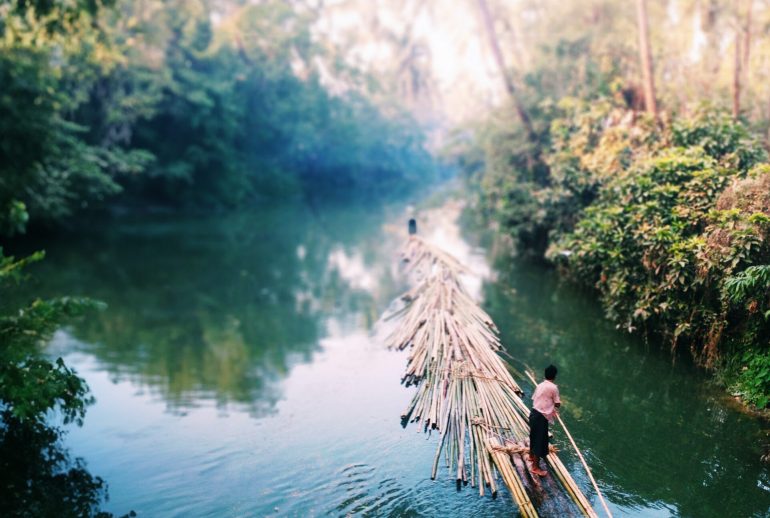I remember taking this photo vividly in December 2013. Christen and I were in a little town near Mrauk U, on the edge of Myanmar near the Indian Ocean and up the Lemro River. It was late afternoon. We were crossing a bridge, feet throbbing from a day of exploring the bewildering complex of 15th-century temples nearby.
I saw two men transporting large bamboo stacks underneath the bridge, and I quickly snapped a few shots with my primary camera. They were moving fast with the swirling water, so I swapped to my iPhone 5, firing off a few shots. I wasn’t happy with the Leica images, but I found this photo in my camera roll to be good enough.
Every time I go back to the photo, the original image doesn’t match the images in my memory, which was like an itch that dug deep.
With Photoshop’s generative AI tool, I can finally experiment turn this photo into something more akin to my memory.
I’m still playing with generative AI. For me, the initial wow of what these tools can do has given way to a slower-burning curiosity about how they can be applied. In the imagery category, lots of generated “art” has felt cold and impersonal to me. I’d like to see if generative AI can make images more human, more personal instead of a flat sterile object that feels like 10,000 monkeys painting something over and over again.
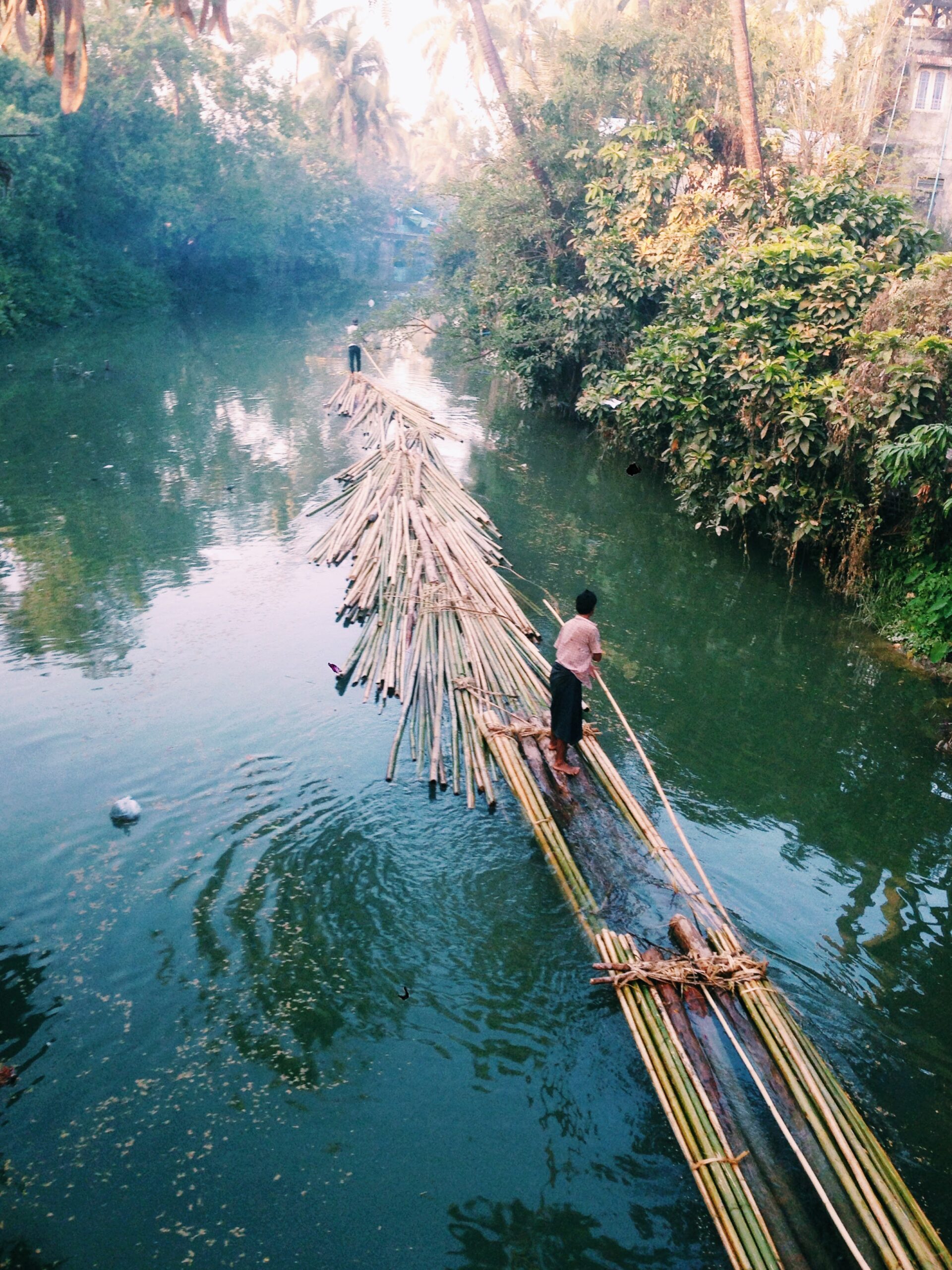
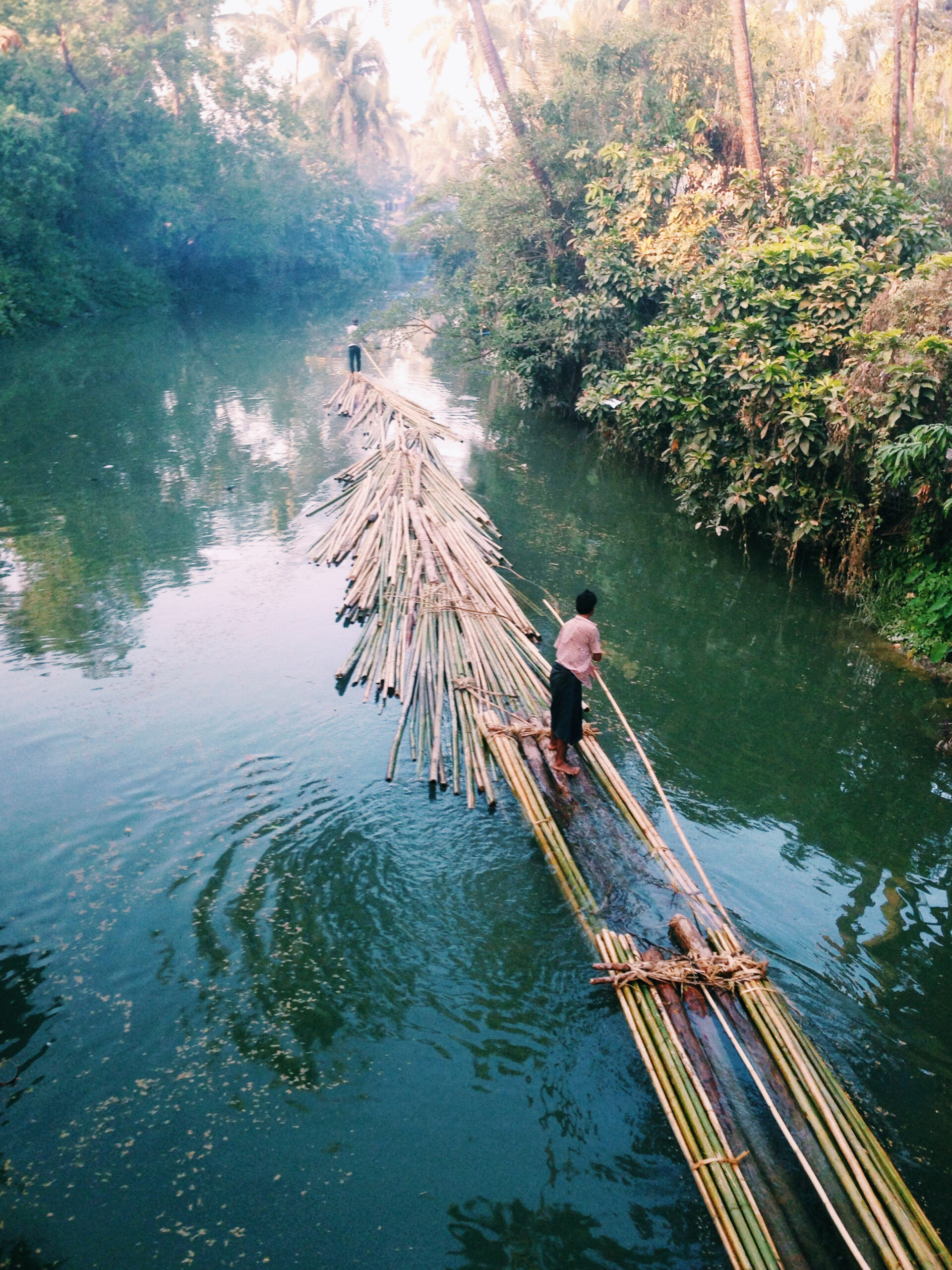
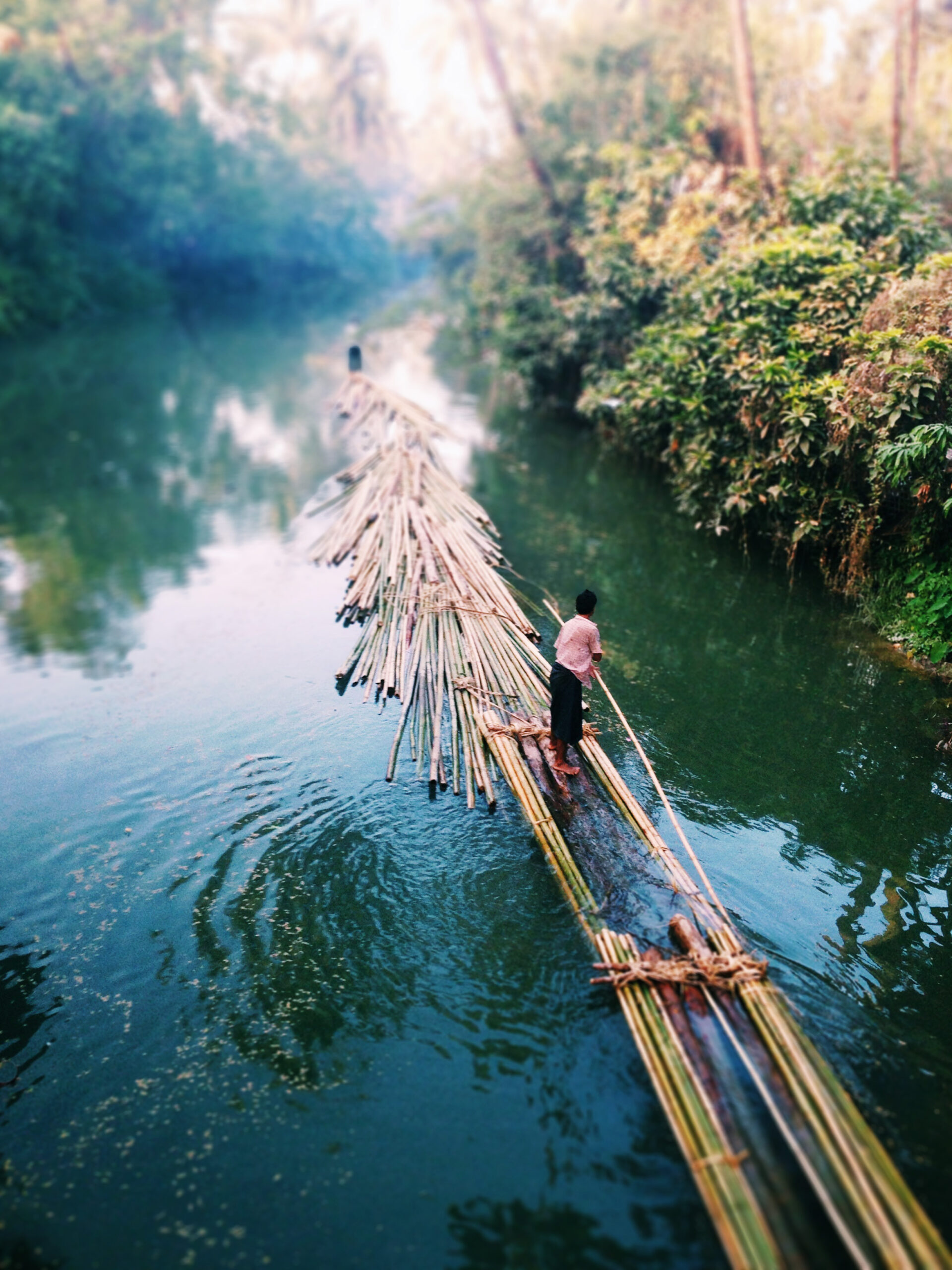
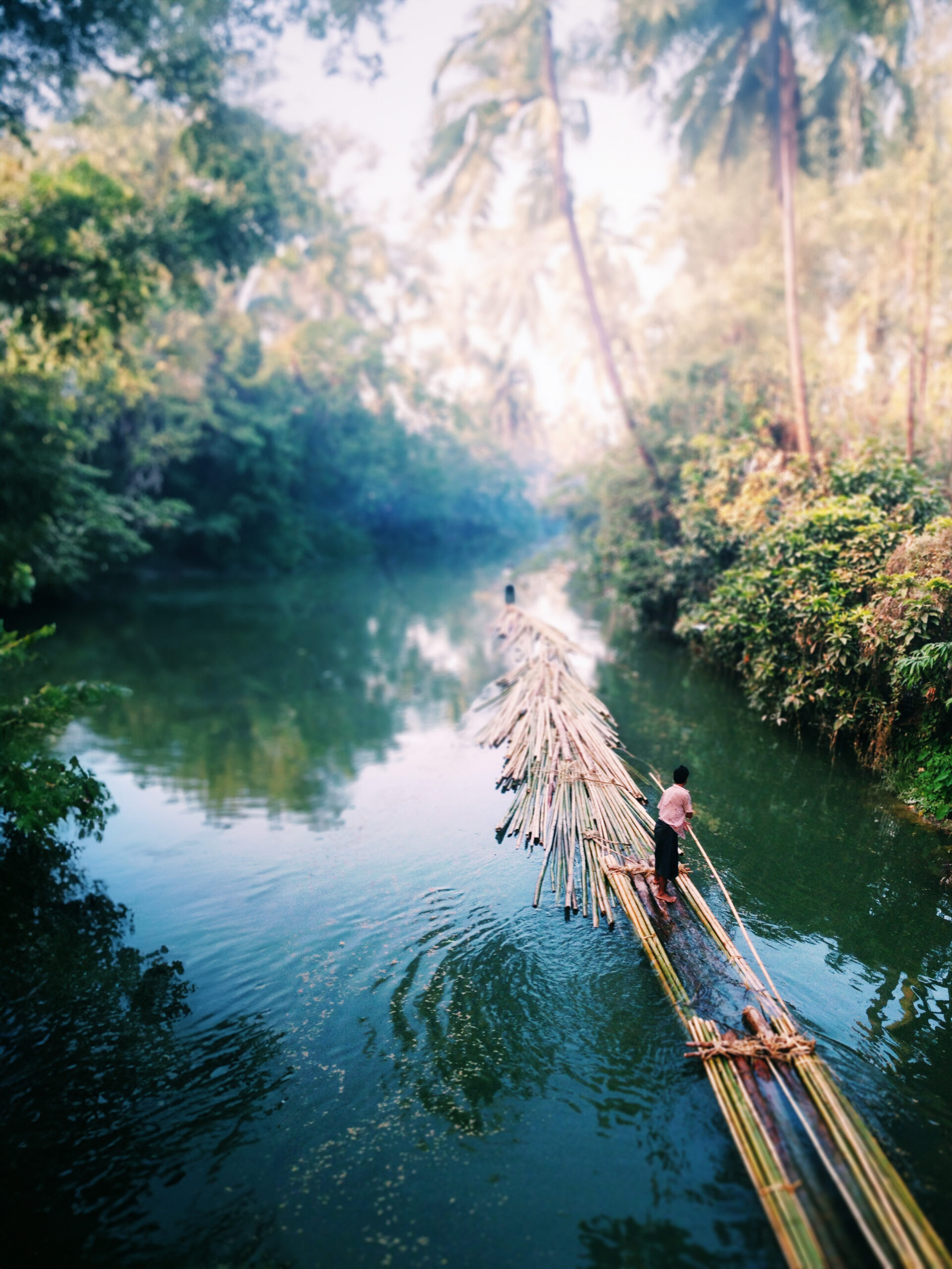
Does it matter if what I remember is different from the actual events — literally captured by light and frozen in time? What does it say about the new AI tools to take small mental seeds within our minds and extend them into fully formed ‘remembered’ images? Does the literal truth matter? Do our memories ever reflect the literal truth, or are they important to us because they evoke sensations, highlights, and emotions that are important to us?
Here’s a small list of how the original image was changed:
- Original image
- Generative AI: remove buildings, camera imperfections, trash, distracting foilage
- Neural filter: a more substantial depth of field
- Generative AI: extend landscape
The end result is closer to my untrustworthy memories. In my mind’s retelling, I was struck by the lush jungle enveloping these two men. They are so small against the encroaching green. Christen and I traveled so far to reach this place, and my memory wanted to believe that Mrauk U was pristine, a stasis oasis hidden from the rest of the world. In some ways, it is such a place. But it’s also a place with cheap cement buildings, trash and plastic problems, unemployment, poverty, nearby ethnic cleansing camps and more. This photo removes some of that ugliness and reinforces my nostalgic romanticism.
I’m not sure if it’s better or worse, but it’s incredibly harrowing to be able to do this in a few clicks, when just weeks ago, it would have taken many hours to achieve something similar.
